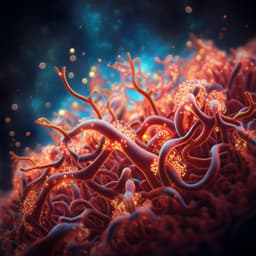
Chemistry
Engineering transient dynamics of artificial cells by stochastic distribution of enzymes
S. Song, A. F. Mason, et al.
This groundbreaking research introduces an innovative artificial platform that utilizes stochasticity to control the motility of artificial cells. By confining enzymes to fluidic polymer membranes, the study reveals how asymmetric distribution of propulsive units enhances motility in the presence of substrates, paving the way for synthetic systems mimicking life-like behaviors. This work was carried out by Shidong Song, Alexander F. Mason, Richard A. J. Post, Marco De Corato, Rafael Mestre, N. Amy Yewdall, Shoupeng Cao, Remco W. van der Hofstad, Samuel Sanchez, Loai K. E. A. Abdelmohsen, and Jan C. M. van Hest.
~3 min • Beginner • English
Related Publications
Explore these studies to deepen your understanding of the subject.







